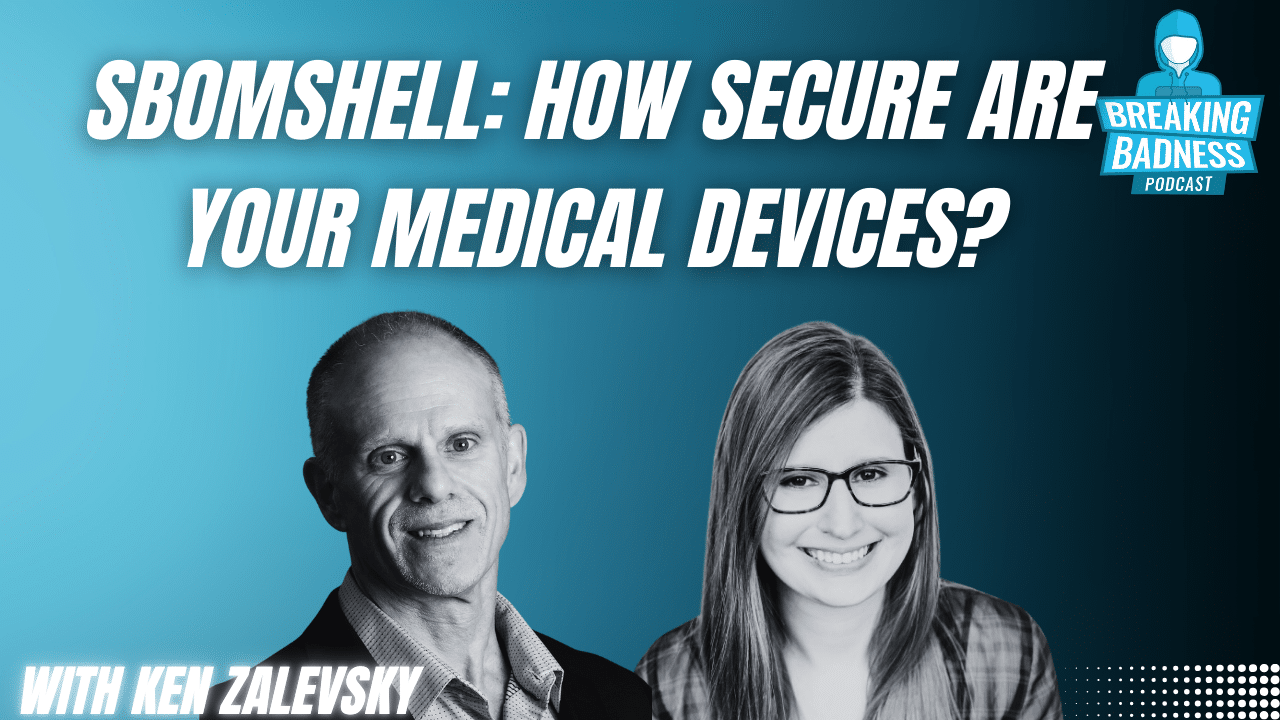Healthcare Cybersecurity: Protecting Patients in 2024 Ken Zalevsky
Introduction
In this episode of Breaking Badness, we dive into the critical challenges and innovations in healthcare cybersecurity with Ken Zalevsky, CEO of Vigilant Ops. From the vulnerabilities in medical devices to the revolutionary role of Software Bill of Materials (SBOMs), Ken shares his two decades of expertise in safeguarding patient safety and hospital systems against emerging threats. Tune in to learn about shifting cybersecurity left, the complexities of interconnected healthcare systems, and actionable strategies to combat ransomware and legacy vulnerabilities.
The Intersection of Healthcare and Cybersecurity
Healthcare is at the forefront of cybersecurity challenges, where patient safety meets the critical need for protecting data and systems. In this episode, Ken sheds light on the unique cybersecurity pressures faced by healthcare organizations and the pivotal role of Software Bill of Materials (SBOMs).
“When patient lives are on the line, you really have to figure out what you’re doing with respect to cyber.” – Ken Zalevsky
The Evolution of Threats in Healthcare
Ken traces the progression of cybersecurity risks in healthcare over the years:
- Data Privacy Era: Initially, the focus was on protecting sensitive patient data. Regulatory frameworks like HIPAA emerged to curb breaches, such as celebrity scan leaks.
- The Security Shift: A turning point came when vulnerabilities in medical devices were exposed, like the infamous Black Hat demo of a hacked insulin pump. This led to a growing realization: “Security is just as important as safety,”
What is an SBOM and Why Does It Matter?
A significant portion of the discussion revolves around SBOMs and their necessity in healthcare:
- Definition: An SBOM is essentially a detailed list of software components running in a device, akin to the ingredient list on a food package. This transparency is vital for identifying vulnerabilities in software components like operating systems.
- Example: Ken explains, “If a hospital is running a device with Microsoft Windows 10, knowing vulnerabilities in that component allows them to proactively mitigate risks.”
- Challenges in Adoption: Many organizations struggle to manage SBOMs effectively, often relying on manual processes.
The Impact of IoMT (Internet of Medical Things)
Ken highlights the exponential growth of interconnected medical devices and its implications for cybersecurity:
- Complexity and Risk: With an average of 10–15 connected devices per hospital room, the attack surface has expanded dramatically. “Once you connect a device to the network, your risk for hacking goes up exponentially.”
- Legacy Systems: Outdated systems remain a weak point, unable to keep up with modern security demands. Ransomware attacks like WannaCry have exposed these gaps, leaving hospitals scrambling to understand their vulnerabilities.
Shifting Cybersecurity Left in Healthcare
The concept of shifting cybersecurity left—embedding it in the design phase of medical devices—is critical for creating secure products:
- FDA Mandates: Regulatory bodies like the FDA now require SBOMs for medical devices, pushing manufacturers to prioritize security early in the product lifecycle.
- Ken’s Insight: “You can’t bolt security on later; it needs to be built in” thinking about security differs fundamentally from thinking about safety, requiring engineers to anticipate malicious scenarios.
Emerging Technologies in SBOM Management
Ken shares his perspective on the future of SBOMs and cybersecurity in healthcare:
- Role of AI: Artificial intelligence can help manage the vast amounts of data associated with vulnerabilities and dependencies, making analysis and prioritization faster and more accurate.
- Supply Chain Transparency: “We need SBOMs to be ubiquitous across industries,” Ken argues, emphasizing the importance of transparency in software supply chains to reduce vulnerabilities.
Key Takeaways for Healthcare Organizations
- Embrace SBOMs: Proactively adopt SBOMs to gain visibility into software vulnerabilities.
- Automate Processes: Invest in tools that can monitor and manage vulnerabilities continuously.
- Prioritize Cybersecurity: Shift security considerations left in the product lifecycle to ensure safety and compliance.
Securing the Future of Healthcare
Ken Zalevsky leaves us with a compelling thought: “The more interconnected our systems, the more vigilant we must be in ensuring their security.” As the healthcare industry continues to innovate, cybersecurity must remain a top priority to safeguard patient safety and trust.
That’s about all we have for this week, you can find us on Mastodon and Twitter/X @domaintools, all of the articles mentioned in our podcast will always be included on our podcast recap. Catch us Wednesdays at 9 AM Pacific time when we publish our next podcast and blog.
*A special thanks to John Roderick for our incredible podcast music!




